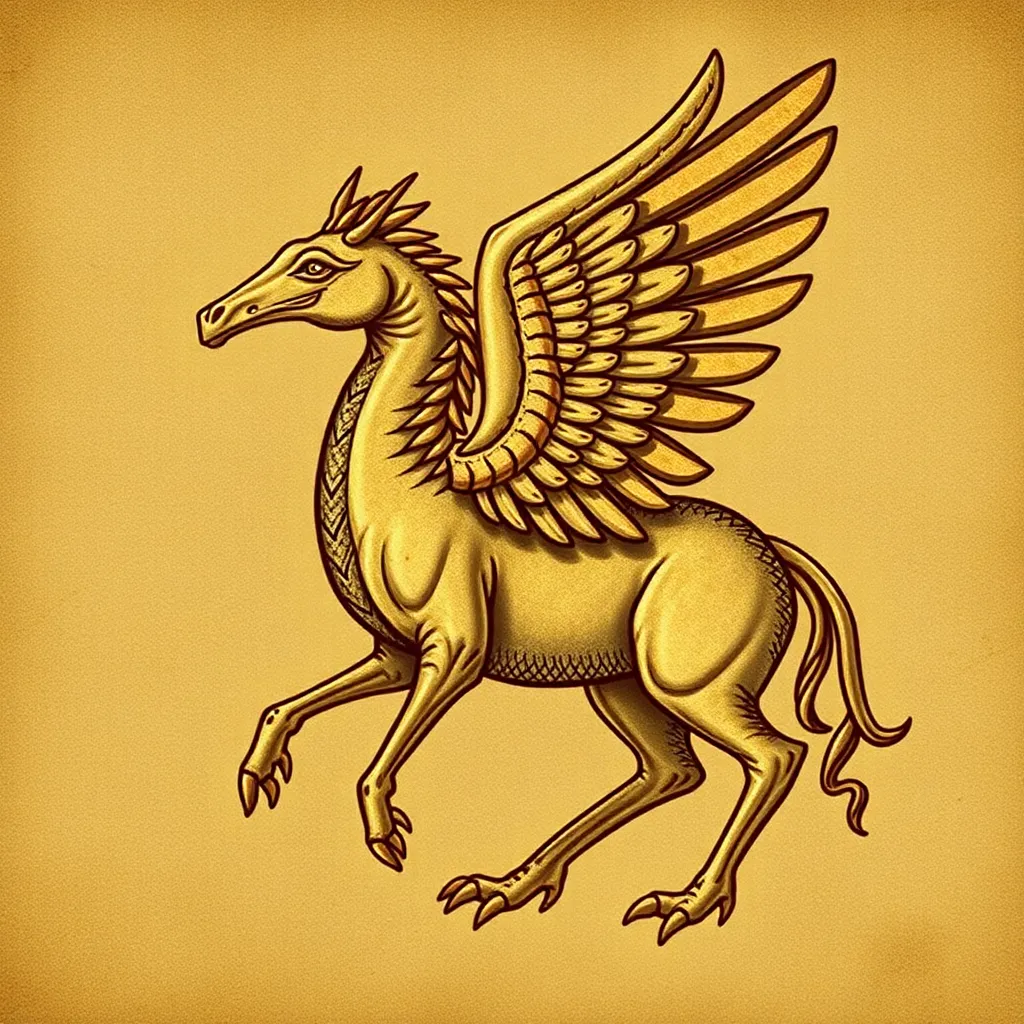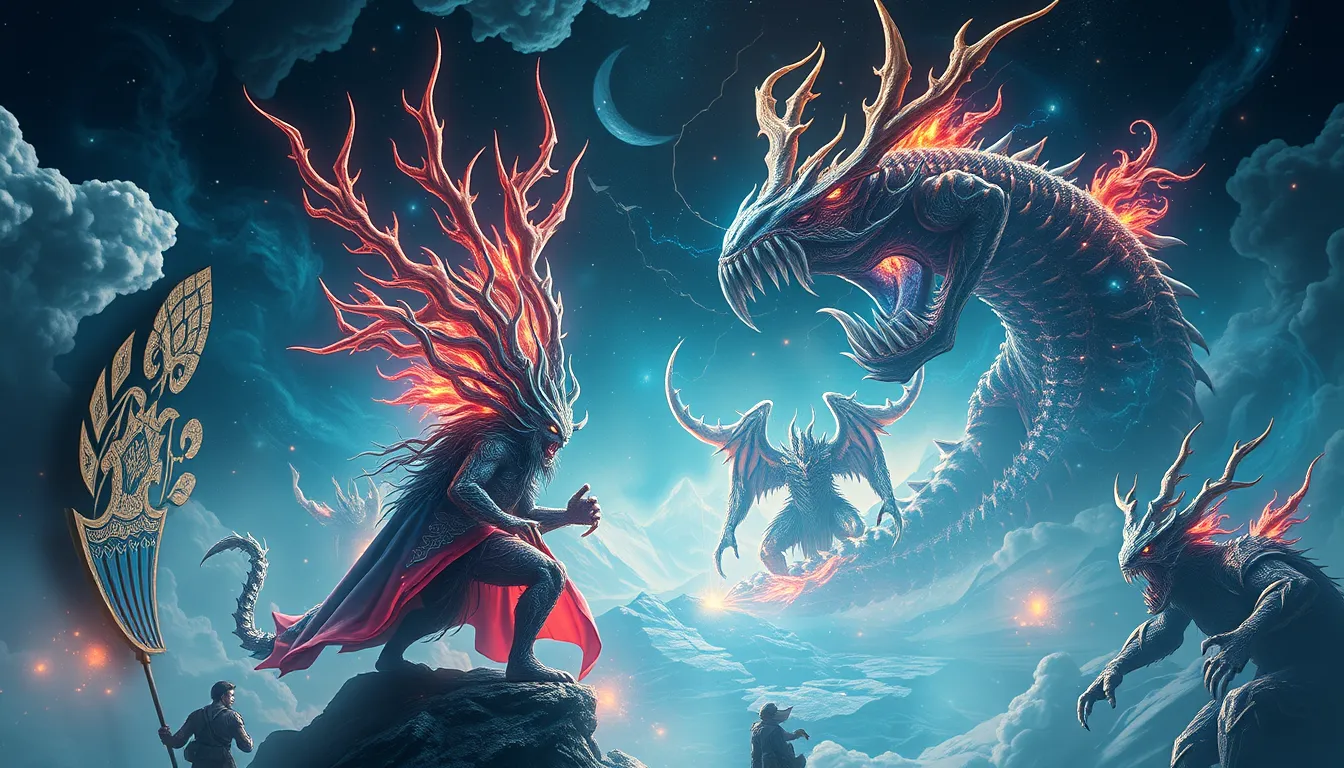The Hippogriff in Medieval European Lore: A Symbol of Chivalry and Courage
I. Introduction
The hippogriff is a fascinating mythological creature, depicted as having the body of a horse and the wings and head of an eagle. This majestic beast captures the imagination with its unique combination of strength and grace, making it a captivating figure in the realm of medieval lore.
In medieval European literature, the hippogriff emerges not only as a fantastical creature but also as a significant symbol of chivalry and courage. It embodies the ideals of knighthood, representing the virtues that knights were expected to uphold during the tumultuous times of the Middle Ages.
This article will explore the hippogriff’s origins, its symbolism, its role in chivalric codes, its artistic representations, its presence in modern media, and its lasting legacy, illustrating how this mythical creature serves as a powerful symbol of chivalry and courage.
II. Origins of the Hippogriff in Literature
The roots of the hippogriff can be traced back to classical mythology, where creatures of hybrid forms often symbolized various human traits and qualities. The concept of combining different animals to create a new and powerful entity reflects the complexities of human nature and the world around us.
The first notable depiction of the hippogriff appears in Ludovico Ariosto’s epic poem “Orlando Furioso,” written in the early 16th century. In this work, the hippogriff is introduced as a noble steed belonging to the knight Ruggero, symbolizing both strength and the mystical. This portrayal set the stage for the hippogriff’s evolution in subsequent medieval texts, where it became associated with heroic quests and noble deeds.
As medieval literature progressed, the image of the hippogriff transformed, finding its place in various tales that highlighted the themes of valor and honor in chivalric culture.
III. Symbolism of the Hippogriff
The hippogriff represents the duality of nature; it combines the attributes of two powerful animals—the horse, symbolizing strength and nobility, and the eagle, representing freedom and high vision. This duality reflects the balance of opposing forces, a common theme in medieval philosophy.
Furthermore, the hippogriff is closely connected to the ideals of chivalry, which emphasized virtues such as bravery, loyalty, and honor. Knights who sought to tame or ride a hippogriff were seen as embodying these ideals, showcasing their courage in facing challenges that seemed insurmountable.
As a metaphor for courage and honor, the hippogriff serves as a reminder of the qualities that define a true knight. It challenges individuals to rise above their fears and strive for greatness, making it an enduring symbol of the heroic journey.
IV. The Hippogriff in Chivalric Codes
Mythical creatures like the hippogriff play a significant role in chivalric tales, often serving as both allies and obstacles for knights on their quests. The presence of such beings adds an element of the supernatural, enhancing the narrative’s stakes and excitement.
The hippogriff, in particular, acts as a test of a knight’s worthiness. To successfully ride or tame a hippogriff, a knight must demonstrate not just physical prowess but also moral integrity and bravery. This challenge embodies the chivalric code, which demanded that knights act honorably and courageously.
Examples from medieval literature illustrate these themes:
- Orlando Furioso: The protagonist Ruggero’s bond with the hippogriff symbolizes his noble character and his commitment to chivalric ideals.
- Various Arthurian Legends: Knights often encounter mythical beasts, including the hippogriff, on their quests for the Holy Grail, serving as tests of their virtue.
V. The Hippogriff in Art and Iconography
Throughout the medieval period, the hippogriff was depicted in various forms of art, including illuminated manuscripts and tapestries. These artistic interpretations often highlight the creature’s majestic nature and its symbolic significance in chivalric culture.
In illuminated manuscripts, the hippogriff is frequently illustrated alongside knights and other mythical creatures, illustrating the blend of reality and fantasy in medieval storytelling. Tapestries often feature scenes of knights riding hippogriffs, emphasizing the themes of adventure and bravery.
The influence of the hippogriff also extends to heraldry and knightly symbols, where it represents noble qualities and valor. Artistic interpretations of the hippogriff vary by region, reflecting local customs and artistic styles, yet the core symbolism remains consistent.
VI. The Hippogriff in Modern Media
In contemporary literature and film, the hippogriff continues to captivate audiences, demonstrating the enduring appeal of medieval mythology. Adaptations such as J.K. Rowling’s “Harry Potter” series introduce the hippogriff to a new generation, reimagining it as a creature of loyalty and intelligence.
This resurgence of interest in medieval mythology has led to a revitalization of the hippogriff’s image in popular culture, where it is often depicted as a noble and courageous beast. The hippogriff serves as a symbol of bravery, challenging characters to confront their fears and embrace their destinies.
VII. Legacy of the Hippogriff
The hippogriff’s impact on modern interpretations of chivalry is profound. It serves as a reminder of the values that underpin heroic narratives, emphasizing the importance of courage, honor, and integrity in our lives.
In fantasy genres, the hippogriff remains a prominent symbol, appearing in various forms of media, including literature, video games, and films. Its continued significance speaks to a collective yearning for stories that celebrate bravery and the heroic journey.
Ultimately, the hippogriff stands as a timeless emblem of courage and honor, transcending its mythological origins to inspire individuals in their quests for greatness.
VIII. Conclusion
In summary, the hippogriff holds a significant place in historical and cultural contexts, representing the chivalric values that define the heroic ideal. Its enduring appeal lies in its ability to embody the qualities of bravery and honor, challenging individuals to strive for excellence.
As we reflect on the relevance of the hippogriff in today’s society and literature, it becomes clear that this mythical creature continues to resonate with audiences, serving as a powerful symbol of the courageous spirit that lies within us all.



